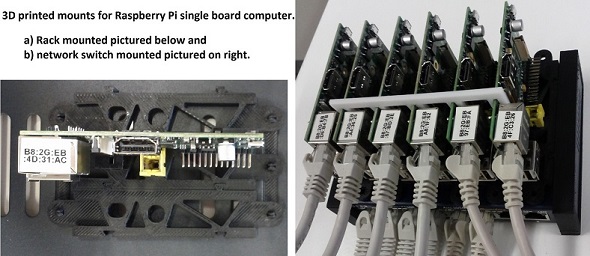Large and complex Distributed Real-time and Embedded (DRE) systems can be deployed and executed using both bare-metal and virtualised machine approaches. When a targeting a bare-metal deployment, the number of machines is usually limited due to the cost and availability of a large bank of servers. One solution to this problem is to use low cost single board computers such as the Raspberry Pi.
The hardware infrastructure available to the Defence Information group is currently being extended with the purchase of forty Raspberry Pi computers. This will be configured into a rack mounted cluster of twenty four nodes that can be used alongside the current network of IBM blade servers. Smaller clusters of six or twelve nodes will be used for separate experimental test bed environments.
The construction of these Pi clusters was facilitated by 3D printing technology, where the mounts for each circuit board were designed and printed in ABS plastic ( http://www.thingiverse.com/thing:177705 ). For the large cluster the mounts will be attached to a rack mounted shelf, and for the small clusters the mounts will attach directly to a small network switch.
This additional hardware will assist in the investigation of distributed system design by providing a wide range of hardware capabilities. Having both low and high power servers installed with similar operating systems and middleware, the temporal performance of the system execution can be analysed and assessed against real-world system constraints of space, weight and power.
We are always interested in talking to students about potential projects, so if you have a distributed system project in mind that can utilise a Raspberry Pi cluster please contact us.


